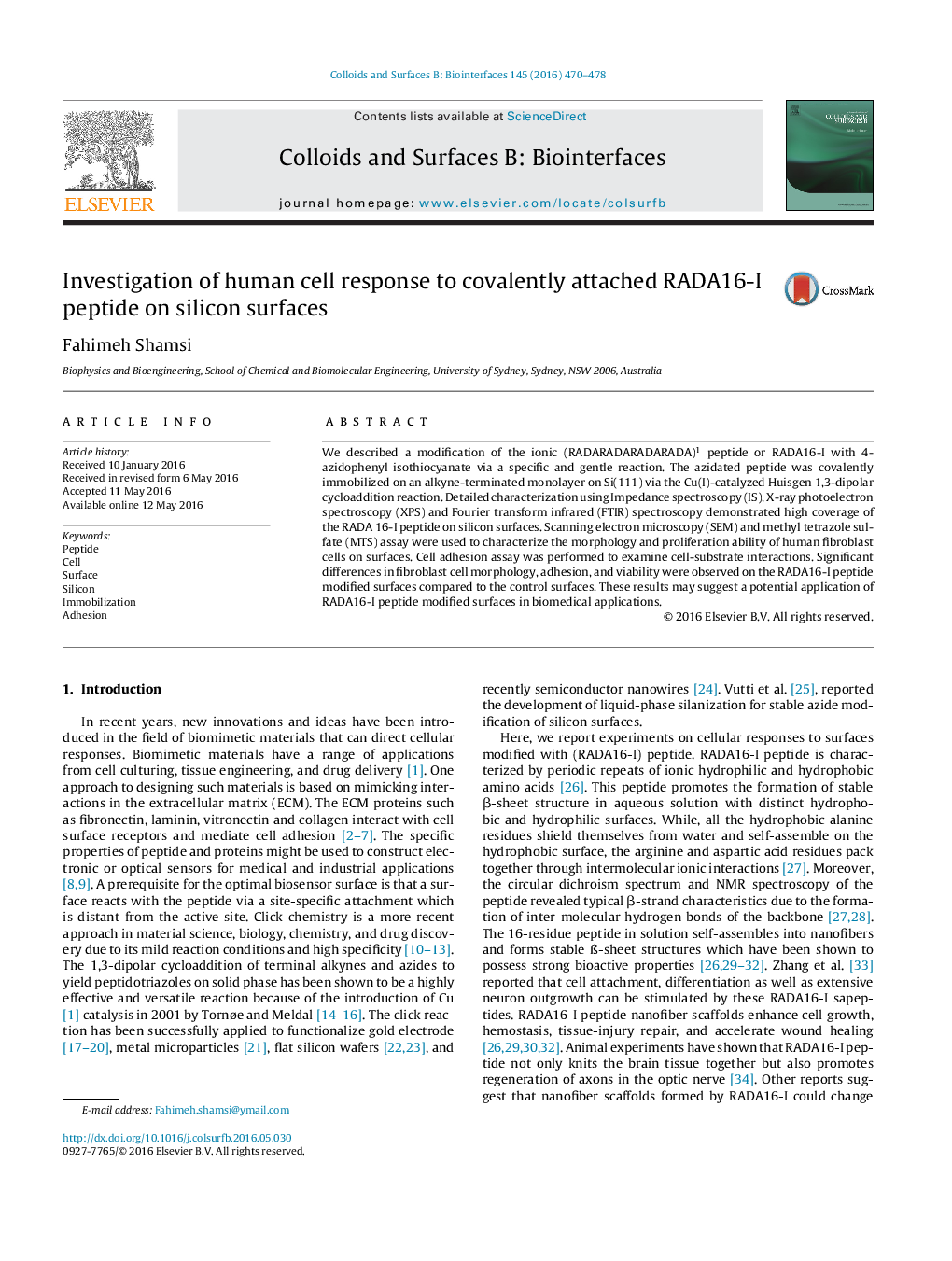| Article ID | Journal | Published Year | Pages | File Type |
|---|---|---|---|---|
| 598971 | Colloids and Surfaces B: Biointerfaces | 2016 | 9 Pages |
•RADA16-I was linked to 4-azidophenyl isothiocyanate through a specific reaction.•The azidated peptide was covalently attached to an alkyne-functionalized surface.•Three techniques were used to characterize the peptide-functionalized surfaces.•Human fibroblast cells were seeded on the RADA16-I peptide immobilized surfaces.•Significant cell response was obtained for RADA16-I peptide modified surfaces.
We described a modification of the ionic (RADARADARADARADA)1 peptide or RADA16-I with 4-azidophenyl isothiocyanate via a specific and gentle reaction. The azidated peptide was covalently immobilized on an alkyne-terminated monolayer on Si(111) via the Cu(I)-catalyzed Huisgen 1,3-dipolar cycloaddition reaction. Detailed characterization using Impedance spectroscopy (IS), X-ray photoelectron spectroscopy (XPS) and Fourier transform infrared (FTIR) spectroscopy demonstrated high coverage of the RADA 16-I peptide on silicon surfaces. Scanning electron microscopy (SEM) and methyl tetrazole sulfate (MTS) assay were used to characterize the morphology and proliferation ability of human fibroblast cells on surfaces. Cell adhesion assay was performed to examine cell-substrate interactions. Significant differences in fibroblast cell morphology, adhesion, and viability were observed on the RADA16-I peptide modified surfaces compared to the control surfaces. These results may suggest a potential application of RADA16-I peptide modified surfaces in biomedical applications.
Graphical abstractFigure optionsDownload full-size imageDownload as PowerPoint slide
